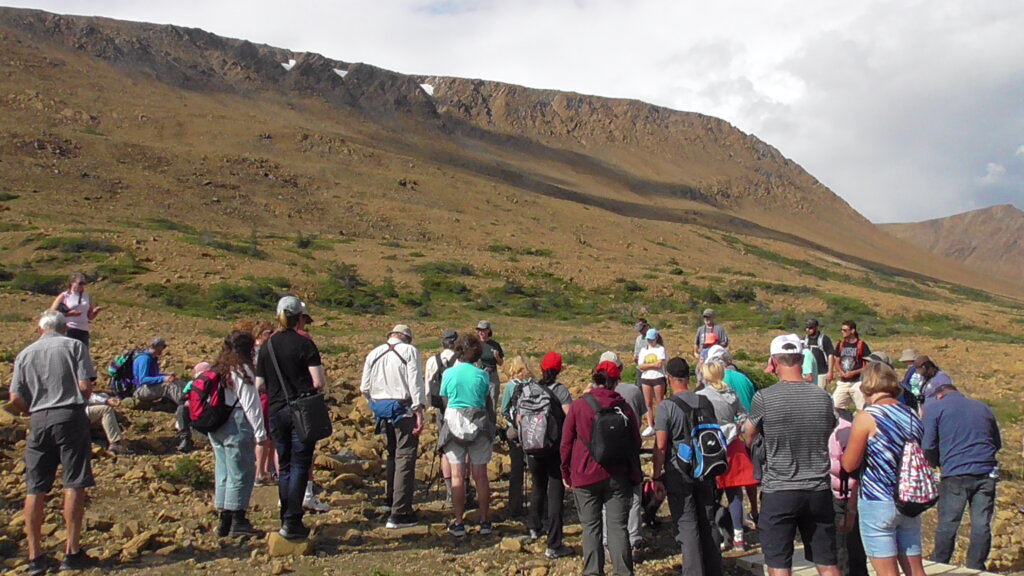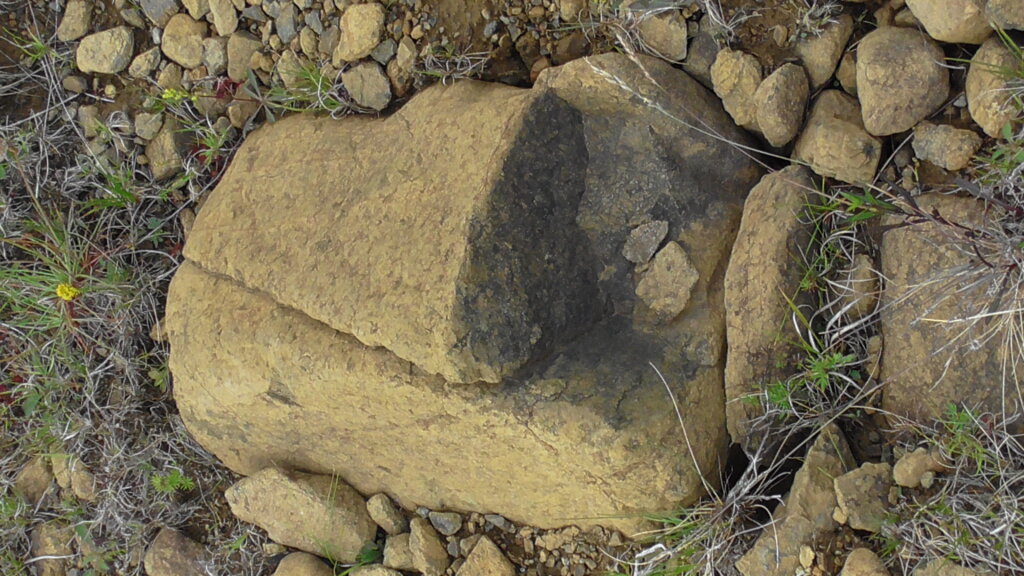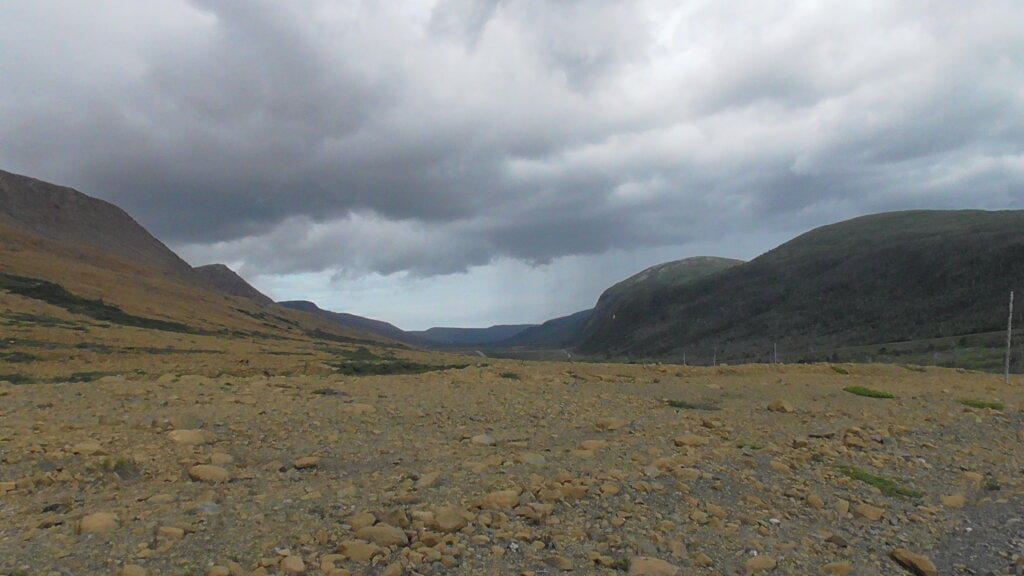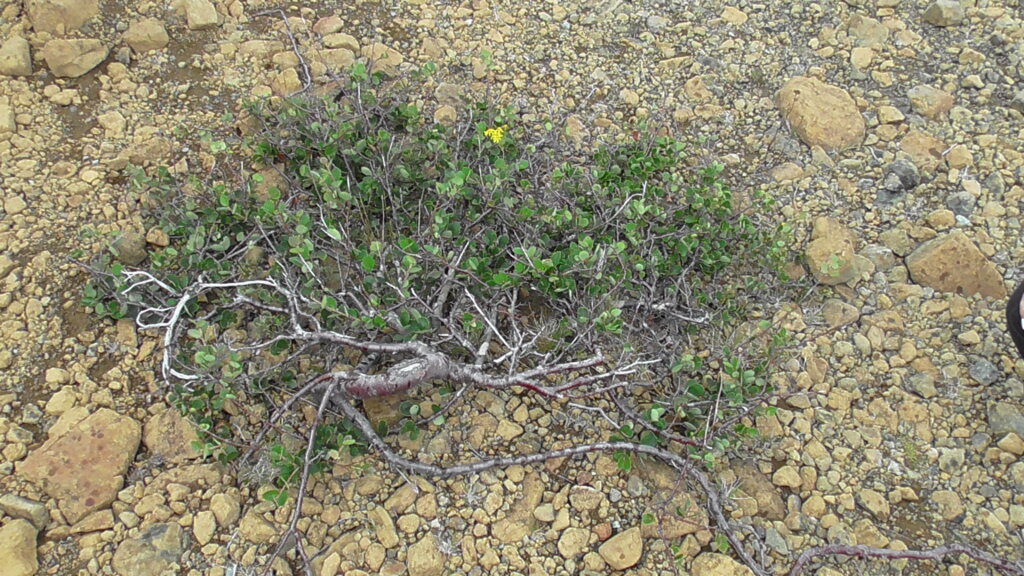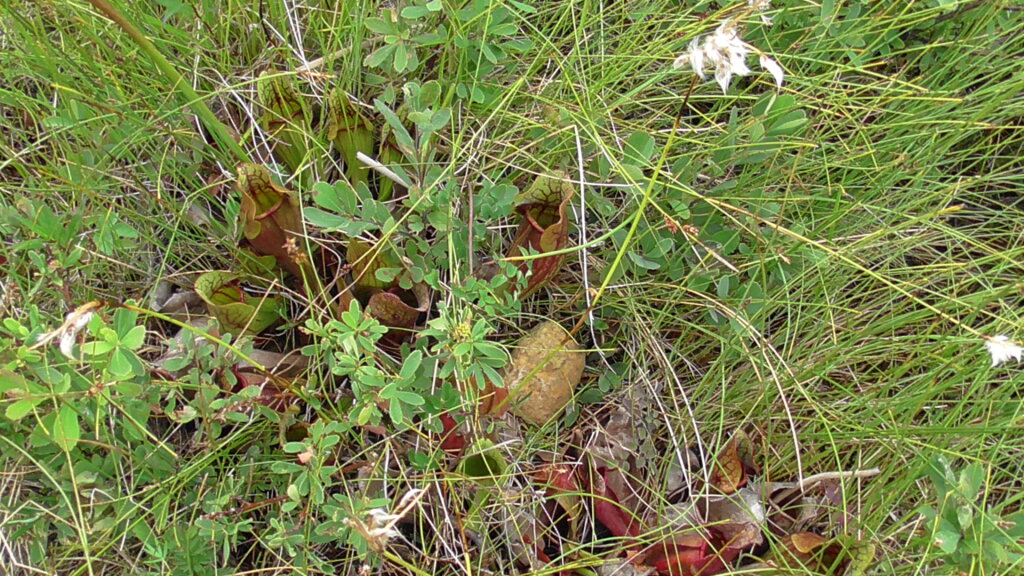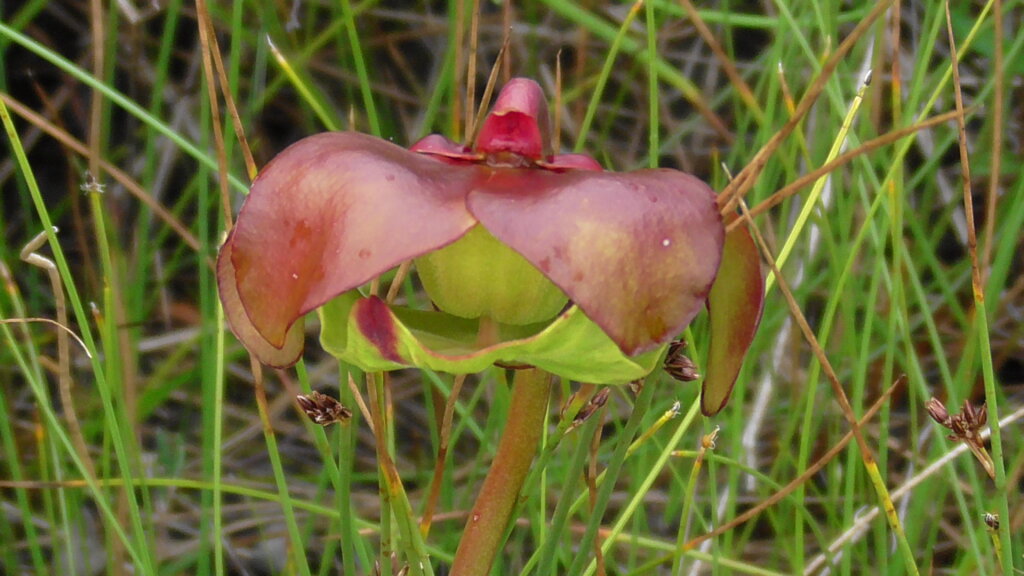Tablelands, Gros Morne National Park, Newfoundland
The crust of the Earth floats on the mantle. There only half a dozen spots on Earth where the mantle emerges through the crust. The Tablelands at Gros Morne National Park is one of them.
The Tablelands look more like a barren desert than traditional Newfoundland. This is due to the ultramafic rock – peridotite – which makes up the Tablelands. It is thought to originate in the Earth’s mantle and was forced up from the depths during a plate collision over four hundred fifty million years ago.
Peridotite is a dark greenish brown in its natural state, but becomes a golden tan as it oxidizes or weathers. The rock is so rich in magnesium and iron that it supports little vegetation; however, botanists are discovering a fascinating community of arctic alpine species that have somehow managed to survive in isolated pockets of the Serpentine Barrens.
One of these plants is the pitcher plant whose flower is the official flower of Newfoundland. Another is the dwarf birch which is hundreds of years old even though its branches are less than an inch in diameter.
